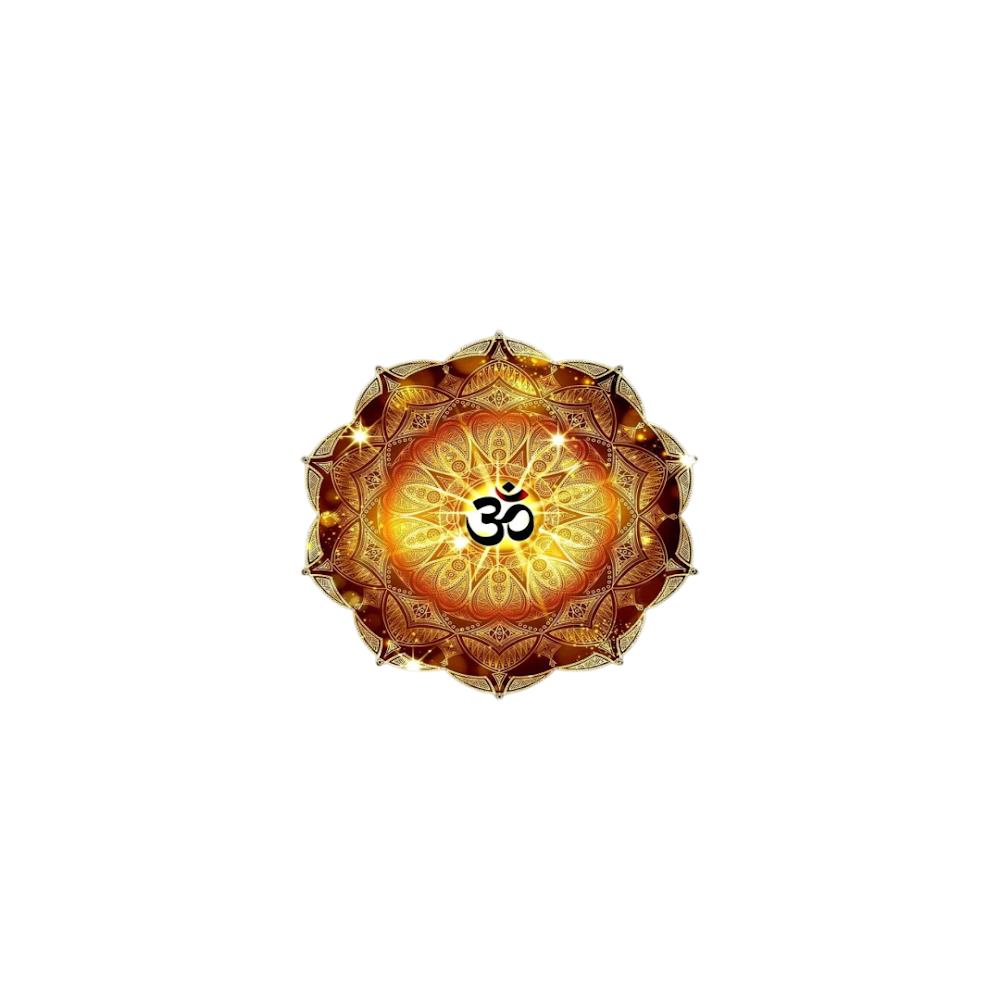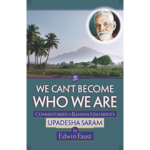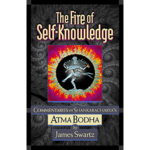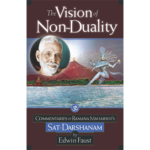Ganesh: I wish to contribute to the sampradaya and the dissemination of self-knowledge because the only thing I love is self-knowledge, traditional Vedanta.
I want to write a mental health book based on self-knowledge. Isvara is nurturing this project and is taking form as ideas flowing and growing. I know that Carol Whitfield has written two books on that topic. I will buy them for inspiration.
Sundari: I think your idea of writing a mental health book from the Vedantic perspective is perfect for you, having intimate knowledge of how the mental healthcare world operates. We have always said that the guna teaching can be used very effectively to help people with psychological problems, even if they are not qualified for self-inquiry. Carol Whitfield does not believe in this approach. From what we know, she first treats people traditionally for their psychological problems and will not allow them to start Vedanta until they are qualified for it. This is the standard Vedantic approach to people with big jiva problems –Vedanta is for mature people with purified, qualified minds.
But our belief is that the guna teaching and karma yoga can be uncoupled from the doctrine of Vedanta because they are just common sense. Everyone experiences the gunas, and almost everyone knows that they are not in control of results. Karma yoga can be used in four different ways, with and without the doctrine. Here is a brief teaching on these stages:
There are two types of karma yoga: secular, for worldly people not qualified for self-inquiry, people who believe they are people and can gain something from action; and sacred karma yoga is for people who have realized that there is nothing to can by action and are ready or engaged in self-inquiry. There are three main types of doer renouncement: (1) karma yoga – surrendering the results of action to Isvara, (2) karma sannyas – renouncing gratuitous actions and (3) karma jnana sannyas – the knowledge that you may act but you are not the doer. The fourth stage of karma yoga is nididhyasana, self-actualization.
Secular Karma Yoga
The guna teaching is very effective for doers (karmis); these are people in the world not going for moksa. As a karmi, one uses the knowledge to accomplish things in the world and get what one wants. One can gain knowledge of the gunas without realizing the self and use this knowledge very productively to live a better life by using this knowledge to manage emotions. It is possible to “uncouple” the guna teaching from Vedanta doctrine and apply it “on its own,” so to speak. This would be very useful for people in the human resources field, as well as a more enlightened approach to psychological counselling and related mental health therapies.
Step One of Doer Renouncement: Sacred Karma Yoga
This is for people actively engaged in self-inquiry. It is surrendering the results of action to Isvara in an attitude of gratitude, consecrating each thought, word and action on a moment-to-moment basis to Isvara. It is managing your thoughts and emotions and taking all results that do come as prasad. This is the only way to negate the doer. But although the guna teaching in traditional Vedanta comes much later in the teaching methodology, as a karma yogi, how does one manage your emotions or understand what giving up the results of your actions are unless you at least have a rudimentary understanding of what makes up the dharma field, meaning the gunas? The guna teaching can be simplified to understand Isvara and to purify the mind by identifying the jiva’s conditioning and managing the gunas.
Stage Two, Karma Sannyas: Relinquishing of Desire
Karma jnana sannyas is to manage desires and no longer initiating any gratuitous actions. We have surrendered to Isvara and no longer pursue gaining anything in the world, although we still do what is required to live. Once the mind is purified, we apply self-knowledge to discriminate the self from the not-self, meaning the gunas. This means that you know that your conditioning does not belong to you but you are still bound by it. At this stage, unless one really understands the doctrine behind gunas, many highly qualified inquirers get stuck with the subtlest teaching of all, the relationship between pure awareness and Isvara, jiva and jagat. It does not work to superimpose satya (pure awareness) on mithya (Isvara, jiva and jagat). If superimposition happens, even though the self is known, it will remain indirect knowledge, i.e. the self will still appear as an object. And we will think we must “get” it. Or we must wait to have that final experience that will prove we are awareness! Direct knowledge and self-actualization is the difficult part. Therefore full understanding of the Isvara-jiva-jagat identity (aikyam) and the guna teaching is of paramount importance.
Moksa is discriminating the self from the not-self. Through discrimination, the jiva, the individual under the spell of self-ignorance, understands that it is actually the self, limitless awareness, and not the person it thinks it is. Moksa is for the jiva because the self is already free. This knowledge allows the jiva to live free in this apparent reality.
Stage Three: Karma Jnana Sannyas
The third and final stage of sacred karma yoga is karma jnana sannyas, the full negation of the doer with the knowledge that we can act but Isvara is the only doer. It is rendering binding vasanas non-binding. If self-knowledge has fully removed the ignorance of your true nature and you know without a doubt that you are the self, beyond the gunas – triguna-atita – this is moksa. In this case, karma yoga is no longer a practice as such, it is just knowledge. However, duality does not disappear once you know what it is. Maya/macrocosmic ignorance continues even though personal ignorance or microcosmic ignorance has been removed by self-knowledge. Additionally, more often than not the doer survives moksa and we still have work to do on rendering binding vasanas non-binding. Here karma yoga becomes a different kind of mind management, nididhyasana, the transformation of our remaining binding mental/emotional conditioning into devotion to the self. This period can take many years for most inquirers and it requires the application of sacred karma yoga and jnana yoga, until the jiva is fully dismissed.
Step Four, Self-Actualization: Nididhyasana
Nididyasana comes after karma jnana sannyas. Karma yoga is a secondary form of nididyasana. Nididhyasana is managing the mind’s involuntary thoughts as well as our habitual thoughts and feeling patterns, which are bedrock duality and can survive moksa. Without self-objectivity and mind-management, these patterns can still hijack the mind without a moment’s notice, denying it access to the self in the form of self-knowledge. There is nothing inherently wrong with involuntary thoughts, but they tend to immediately morph into actions which are liable to create unwanted karma in the form of obscuring thoughts and emotions.
The practice of self-knowledge involves keeping it in the background during one’s daily transactions. It is difficult if you have a lot of karma, because the mind is easily lost in dealing with it. It is constantly reminding the mind that one’s jiva and the world are both mithya and that the jiva is only a contributor of action while Isvara is the controller of the results. “You have a choice over action alone; never over results. May you not think you are the author of the results of actions. May you not have inclination towards inaction,” (Bhagavad Gita 2:47). It is a fact that you don’t have control of your body, mind, family and possessions, so leave them alone and accept the world as it is. You should always think, “It is a great blessing that I am never affected by anything that happens in mind or the world.”
The obstacles to mind control are (1) sleepiness (tamas) happening during meditation, (2) a mind hopping from one thought to another (rajas), (3) subconscious problems (samskaras) that make the mind dull and (4) attachment to sattva produced by meditation. Once these obstacles are overcome, the mind permanently rests in the knowledge, “I am limitless, unborn, ordinary, unconcerned ever-present blissful awareness.”
~ With much love always, Sundari











